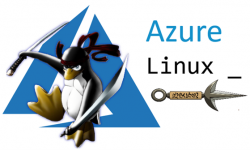Every virtual machine (VM) on Azure has what we call a temporary (ephemeral) disk which is recommended to be used ONLY as temporary storage and that includes SWAP files or data that does not need to be available upon a reboot or saved , the data stored in this drive will be lost. To create a swap file in the directory that’s defined by the ResourceDisk.MountPoint parameter, you can update the /etc/waagent.conf file by setting […]
How to: Deploy a basic wordpress on Ubuntu 16.04 LTS on Azure
How to deploy a simple WordPress instance using Ubuntu 16.04 LTS, Nginx, MariaDB and Memcache in Azure. This article is destined to help understand a basic WordPress deployment on Azure using Ubuntu 16.04 LTS, Nginx with PHP-fpm (for PHP support), MariaDB and Memcache In this example, we are deploying a Standard_F2S VM with premium disk, 2 CPU’s, 4GB of memory and also a local 7GB SSD (Ephemeral disk) which we will use for swap configuration […]
AZ CLI: How to delete and re-deploy a VM from VHD (unmanaged disk)
You should be able to use the built-in CLI on the Azure portal, for more details on how to use it, please check: Azure Cloud Shell (quickstart) If not, you can always install it locally on your workstation or also using docker, for details, please follow the steps described here: Install the Azure CLI For the steps to work properly, please, make sure you are logged into the Azure CLI: <tt>az login</tt> NOTE: You will […]
/var/empty/sshd must be owned by root and not group or world-writable

Problem Statement: You are attempting to ssh into a Linux VM and are unsuccessful. We have seen customers modify key sshd configuration files and upon restarting sshd or rebooting the VM connectivity is lost. symptoms/errors experienced The serial or console log may exhibt errors such as this: SuSE /var/empty must be owned by root and not group or world-writable. startproc: exit status of parent of /usr/sbin/sshd: 255 Failed CentOS Starting sshd: /var/empty/sshd must be owned […]
Why proactively ensuring you have access to GRUB and sysrq in your Linux VM could save you lots of down time?
Quite simply, to speed up the recovery time of your IaaS Linux Virtual Machine most recovery options will be possible if GRUB is configured. Recovering Linux Virtual Machines in Azure You will, at some point have to perform some type of recovery in your Linux VM unless you are very lucky, this inevitable. The reasons for performing a VM recovery are numerous and can be anything such as: • corrupt file systems/kernel/MBR (Master Boot Record) […]
Hello world!
Welcome to WordPress. This is your first post. Edit or delete it, then start writing!
Recent Comments